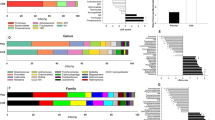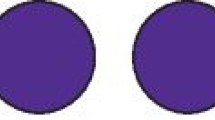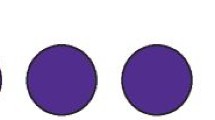Abstract
A review of the published international literature was undertaken to investigate whether dehydration is a risk factor for dental disease. Published evidence of associations between saliva and dental disease and between saliva and dehydration was observed, but the precise nature of these associations is unclear and no evidence of a direct link between dehydration and dental disease was found. It is concluded that no direct link between dehydration and dental disease has been proven, although there is considerable circumstantial evidence to indicate that such a link exists.
Sponsorship: This study was funded through internal funds of the University of Birmingham.
This is a preview of subscription content, access via your institution
Access options
Subscribe to this journal
Receive 12 print issues and online access
$259.00 per year
only $21.58 per issue
Buy this article
- Purchase on Springer Link
- Instant access to full article PDF
Prices may be subject to local taxes which are calculated during checkout



Similar content being viewed by others
References
Al-Dlaigan YH, Shaw L & Smith AJ (2001a): Dental erosion in a group of British 14-year-old school children. Part I: prevalence and influence of differing socioeconomic backgrounds. Br. Dent. J. 190, 145–149.
Al-Dlaigan YH, Shaw L & Smith AJ (2001b): Dental erosion in a group of British 14-year-old school children. Part II: influence of dietary intake. Br. Dent. J. 190, 258–261.
Al-Dlaigan YH, Shaw L & Smith AJ (2002): Is there a relationship between asthma and dental erosion. A case control study. Int. J. Paed. Dent. 12, 189–200.
Anusavice KJ (1995): Preservative dentistry: the standard of care for the 21st century. J. Publ. Health 55, 67–68.
Bardon A, Cedar O & Kollberg H (1983): Cystic fibrosis-like changes in saliva of healthy persons subjected to anaerobic exercise. Clin. Chim. Acta 133, 311–316.
Bartlett DW, Coward PY, Nikkah C & Wilson RF (1998): The prevalence of tooth wear in a cluster sample of adolescent schoolchildren and its relationship with potential explanatory factors. Br. Dent. J. 184, 25–129.
Ben-Aryeh H, Roll N, Lahav M, Dlin R, Hanne-Paparo N, Szargel R, Shein-Orr C & Laufer D (1989): Effect of exercise on salivary composition and cortisol in serum and saliva in man. J. Dent. Res. 68, 1495–1497.
Bergdahl M & Bergdahl J (2000): Low unstimulated salivary flow and subjective oral dryness: association with medication, anxiety, depression and stress. J. Dent. Res. 79, 1652–1658.
Bevenius J & l'Estrange P (1990): Chairside evaluation of salivary parameters in patients with tooth surface loss: a pilot study. Aust. Dent. J. 35, 219–221.
Bishop NC, Blannin AK, Armstrong E, Rickman M & Gleeson M (2000): Carbohydrate and fluid intake affect the saliva flow rate and IgA response to cycling. Med. Sci. Sports Exerc. 32, 2046–2051.
Blannin AK, Robson PJ, Walsh NP, Clark AM, Glennon L & Gleeson M (1998): The effect of exercising to exhaustion at different intensities on saliva immunoglobulin A, protein and electrolyte secretion. Int. J. Sports Med. 19, 547–552.
Brown LR, Dreizen S, Handler S & Johnston DA (1975): Effect of radiation induced xerostomia on human oral microflora. J. Dent. Res. 54, 740–750.
Carbone RF, Sweeney EA & Shaw JH (1966): The comparative influence of thyroid imbalance and limited body weight gain on submandibular gland weight, the protein composition of saliva and dental caries in the rat. Arch. Oral Biol. 11, 781–792.
Dawes C (1981): The effect of exercise on protein and electrolyte secretion in parotid saliva. J. Physiol. Lond. 320, 139–148.
Drake CW, Maryniuk GA & Bentley C (1990): Reasons for restoration replacement in general dental practice. Quintess. Int. 21, 125–130.
Dreizen S, Brown L, Daly TE & Drane JB (1977): Prevention of xerostomia-related dental caries in irradiated cancer patients. J. Dent. Res. 56, 99–104.
Edgar WM & O'Mullane DM (1996): Saliva and Oral Health. 2nd Edition. London: BDJ.
Elderton RJ & Davies JA (1984): Restorative dental treatment in the General Dental Service in Scotland. Br. Dent. J. 157, 196–200.
Gantt W (1929): Salivary secretion and the intake of fluid. Am. J. Dis. Child. 37, 1125–1127.
Gregersen MI (1930): The control of salivary secretion during water deprivation. PhD thesis, Harvard University.
Gregersen MI & Bullock LT (1933): Observations on thirst in man in relation to changes in salivary flow and plasma volume. Am. J. Physiol. 105, 39–40.
Gudmundsson K, Kristleifsson G, Theodors A & Holbrook WP (1995): Tooth erosion, gastrointestinal reflux, and salivary buffer. Oral Surg. Oral Med. Oral Pathol. 79, 185–189.
Hannig M & Balz M (1999): Influence of in vivo formed salivary pellicle on enamel erosion. Caries Res. 33, 372–379.
Hay DI & Moreno EC (1993): Hydroxyapatite interactive proteins. In Cariology for the Nineties. eds. WH Bowen & LA Tabak, pp 71–84. Rochester: University of Rochester Press.
Hellström I (1977): Oral complications in anorexia nervosa. Scand. J. Dent. Res. 85, 71–86.
Holmes JH (1964): Changes in salivary flow produced by changes in fluid and electrolyte balance. In Salivary Glands and their Secretions. eds. LM Sreebny and J Meyer, pp. 177–196. Oxford: Pergamon Press.
Holmes JH & Gregersen MI (1948): Origin of thirst in diabetes insipidus. Am. J. Med. 4, 503–510.
Järvinen VK, Rytoma H & Heinonen OP (1991): Risk factors in dental erosion. J. Dent. Res. 70, 942–947.
Karmiol M & Walsh RF (1975): Dental caries after radiotherapy of the oral regions. J. Am. Dent. Assoc. 91, 838–845.
Kuroiwa M, Kodaka T & Kuroiwa M (1993): Microstructural changes of human enamel surfaces by brushing with and without dentifrice containing abrasive. Caries Res. 27, 1–8.
Ljungberg G, Ericson T, Ekblom B & Birkhed D (1997): Saliva and marathon running. Scand. J. Med. Sci. Sports 7, 214–219.
Mackinnon LT & Hooper S (1994): Mucosal (secretory) immune system responses to exercise of varying intensity and during overtraining. Int. J. Sports Med. 15, S179–S183.
Mackinnon LT & Jenkins DG (1993): Decreased salivary immunoglobulins after intense interval exercise before and after training. Med. Sci. Sports Exerc. 25, 678–683.
Mandel IH (1974): Relation of saliva and plaque to caries. J. Dent. Res. 53, 246–266.
Mannerberg F (1963): Saliva factors in cases of erosion. Odontol. Revy. 14, 155–166.
Maryniuk GA (1984): In search of treatment longevity—a 30 year prospective. J. Am. Dent. Assoc. 109, 739–744.
Maryniuk GA & Kaplan SH (1986): Longevity of restorations: survey results of dentists' estimates and attitudes. J. Am. Dent. Assoc. 112, 39–45.
Mason DK & Chisholm DM (1975): Salivary Glands in Health and Disease. London: Saunders.
McCay CM & Will L (1949): Erosion of molar teeth by acid beverages. J. Nutr. 39, 313–324.
Meurman JH & Frank RM (1991): Scanning electron microscopic study of the effect of salivary pellicle on enamel erosion. Caries Res. 25, 1–6.
Meurman JH, Toskala J, Nuutinen P & Klemetti E (1994): Oral and dental manifestations in gastroesophageal reflux disease. Oral Surg. Oral Med. Oral Pathol. 78, 583–589.
Miller WD (1904): A study of certain questions relating to the pathology of teeth. Dent. Cosmos 46, 981–1001.
Millward AN, Shaw L, Harrington E & Smith AJ (1997): Continuous monitoring of salivary flow rate and pH at the surface of the dentition following consumption of acidic beverages. Caries Res. 31, 44–49.
Millward AN, Shaw L, Smith AJ, Rippin JW & Harrington E (1994): The distribution and severity of tooth wear and relationship between erosion and dietary constituents in a group of children. Int. J. Paed. Dent. 4, 151–157.
Milosevic A, Young PJ & Lennon MA (1994): The prevalence of tooth wear in 14-year old school children in Liverpool. Community Dent. Health 11, 83–86.
O'Brien M (1994): Childrens Dental Health in the United Kingdom 1993. London: Office of Population Censuses and Surveys, HMSO.
O'Sullivan EA & Curzon MEJ (2000): Salivary factors affecting dental erosion in children. Caries Res. 34, 82–87.
O'Sullivan EA, Curzon MEJ, Roberts GJ, Milla P & Stringer MD (1998): Gastroesophageal reflux in children and its relationship to erosion of primary and permanent teeth. Eur. J. Oral Sci. 106, 765–769.
Parry J, Shaw L, Arnaud MJ & Smith AJ (2001): Investigation of mineral waters and soft drinks in relation to dental erosion. J. Oral Rehabil. 28, 766–772.
Rugg-Gunn AJ (1993): Dental caries—the post-eruptive effects of diet. In Nutrition and Dental Health. ed. AJ Rugg-Gunn, pp 91–112. Oxford: Oxford University Press.
Salminen S & Konttinen A (1963): Effect of exercise on Na and K concentrations in human saliva and serum. J. Appl. Physiol. 18, 12–14.
Shannon IL (1966): Climatological effects on human parotid gland function. Arch. Oral Biol. 11, 451–453.
Shannon IL (1967): Effect of exercise on parotid fluid corticosteroids and electrolytes. J. Dent. Res. 46, 608–610.
Ship JA & Fischer DJ (1999): Metabolic indicators of hydration status in the prediction of parotid salivary gland function. Arch. Oral Biol. 44, 343–350.
Walsh NP, Blannin AK, Clark AM, Cook L, Robson PJ & Gleeson M (1999): The effects of high intensity intermittent exercise on saliva IgA, total protein and alpha-amylase. J. Sports Sci. 17, 129–134.
Wilson NHF, Burke FJT & Mjör IA (1997): Reasons for placement and replacement of restorations and direct restorative materials by a selected group of practitioners in the United Kingdom. Quintess. Int. 28, 245–248.
Winsor AL (1930): The effect of dehydration on parotid secretion. Am. J. Psychol. 42, 602–607.
Woltgens JMH, Vingerling P, DeBlieck-Hogervorst JMA & Bervoets DJ (1985): Enamel erosion and saliva. Clin. Prev. Dent. 7, 8–10.
Author information
Authors and Affiliations
Contributions
Guarantor: AJ Smith.
Contributors: AJ Smith and L Shaw both reviewed the published literature and wrote this report.
Corresponding author
Rights and permissions
About this article
Cite this article
Smith, A., Shaw, L. Mild dehydration: a risk factor for dental disease?. Eur J Clin Nutr 57 (Suppl 2), S75–S80 (2003). https://doi.org/10.1038/sj.ejcn.1601905
Published:
Issue Date:
DOI: https://doi.org/10.1038/sj.ejcn.1601905
Keywords
This article is cited by
-
A study of fluid intake from beverages in a sample of healthy French children, adolescents and adults
European Journal of Clinical Nutrition (2010)



